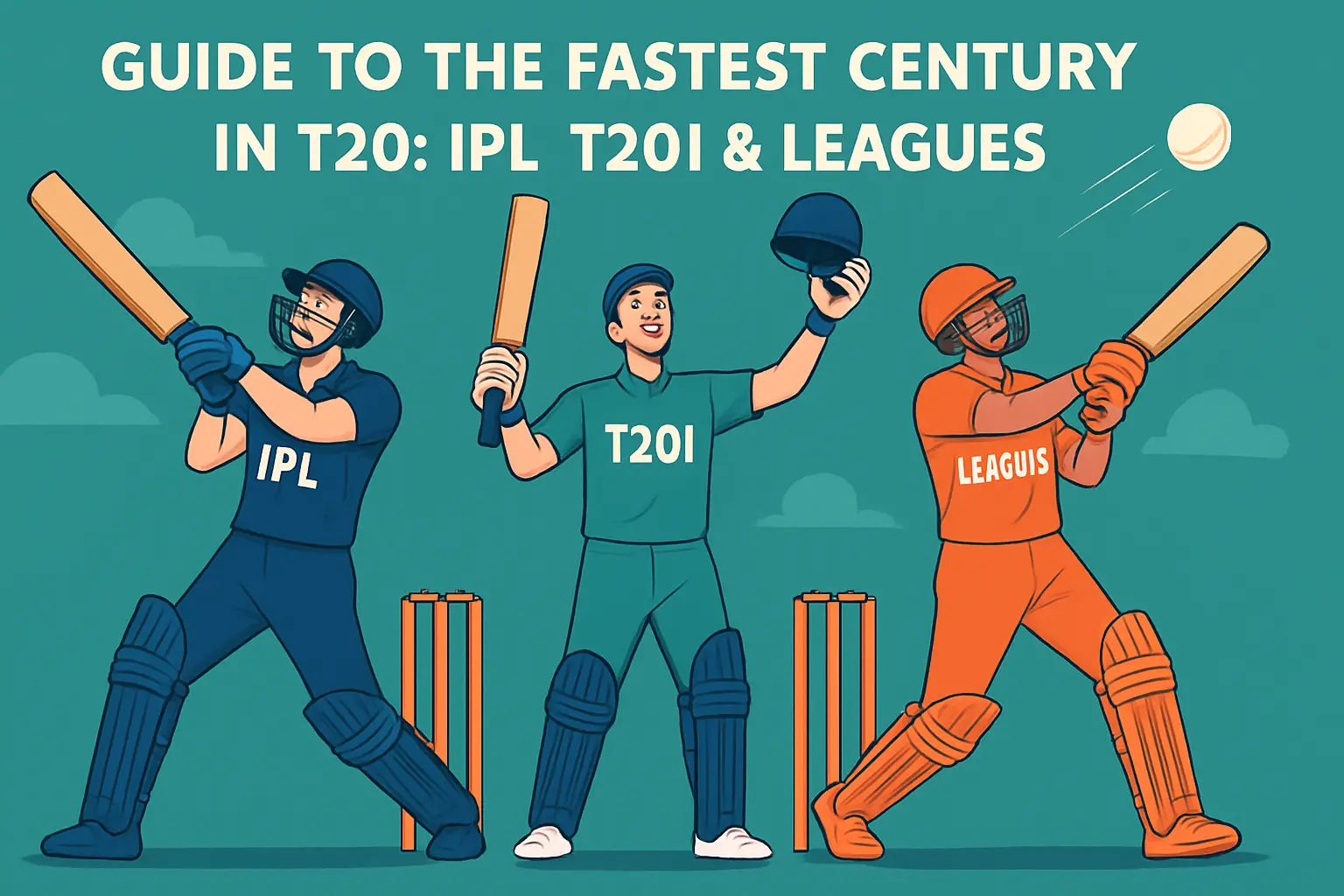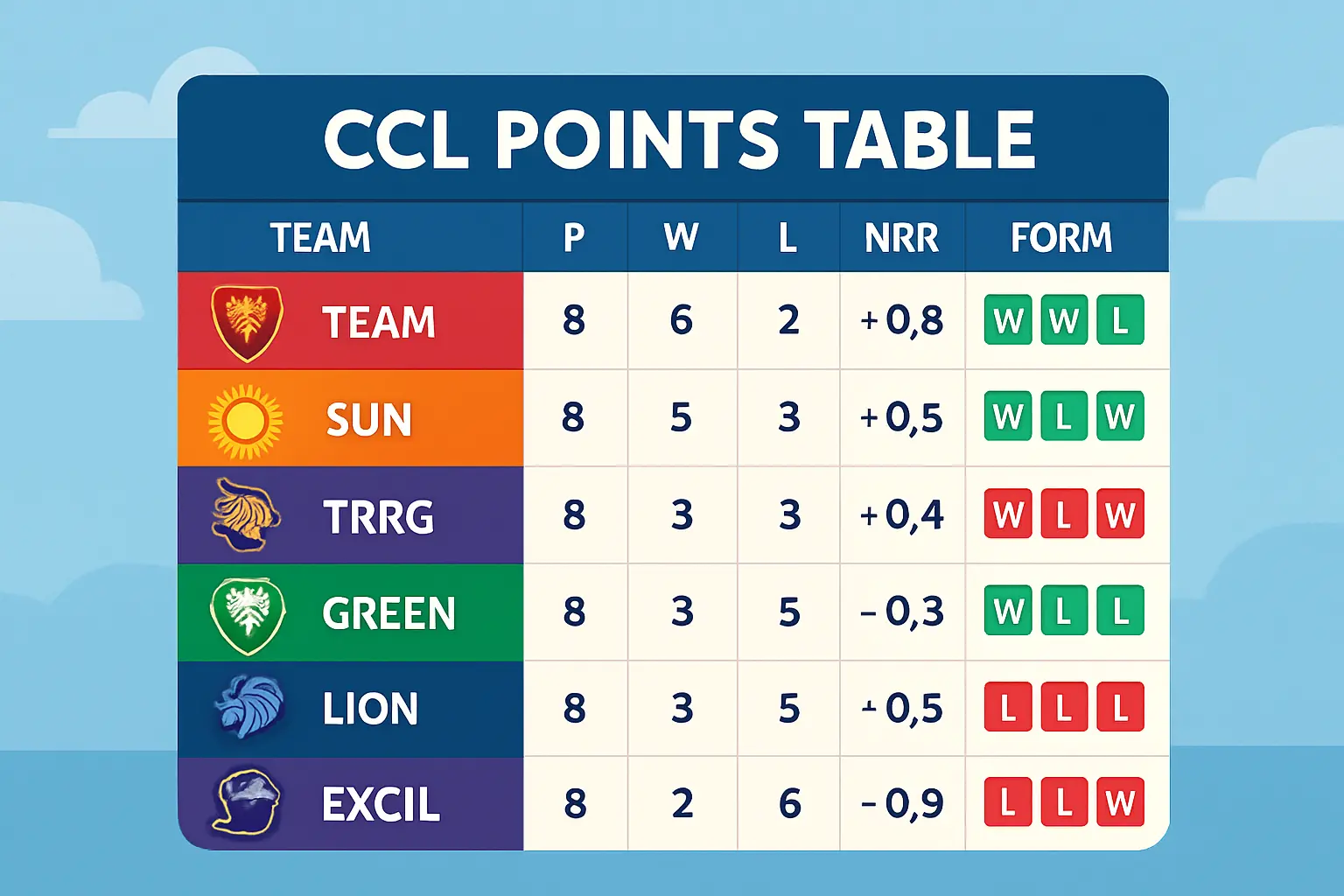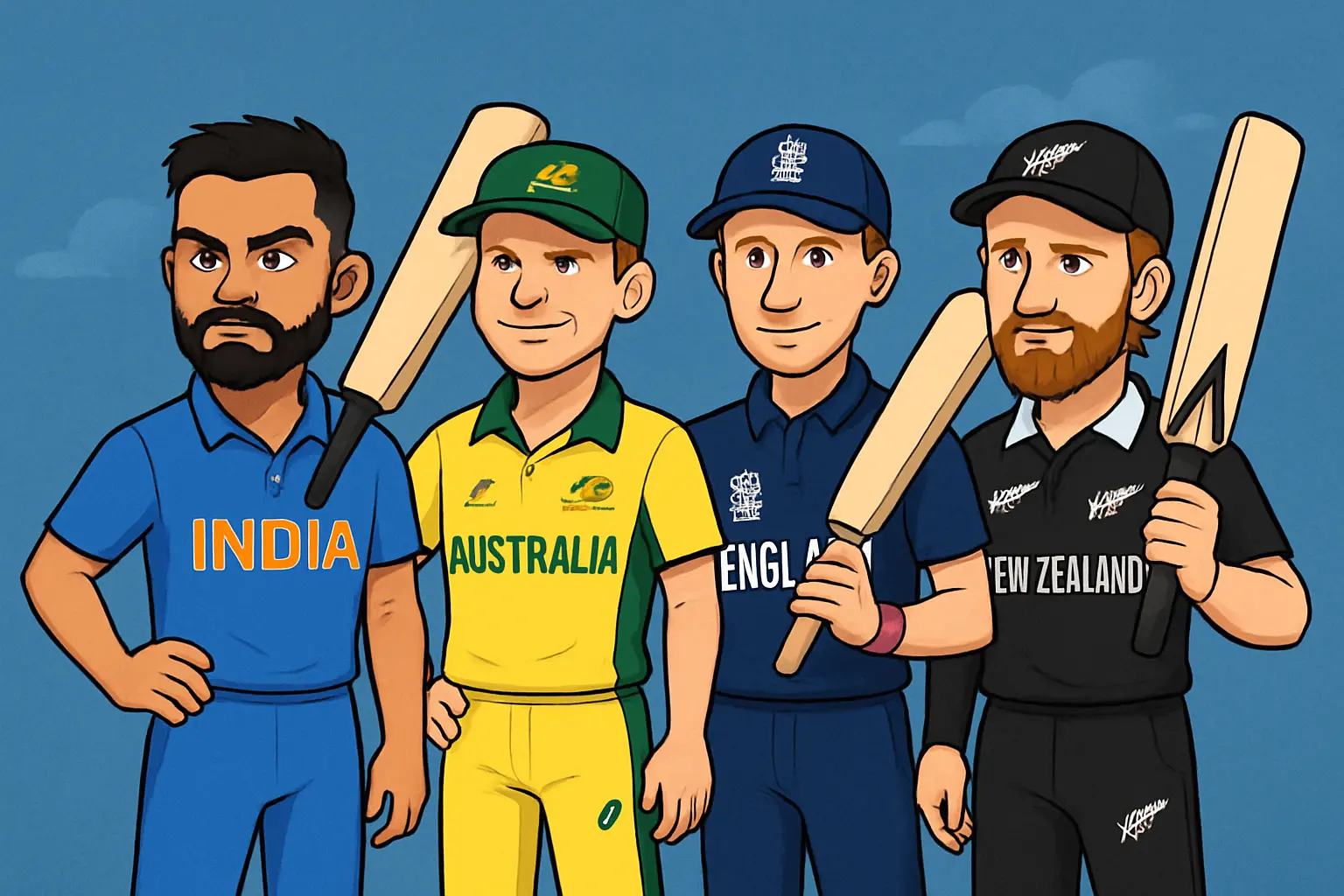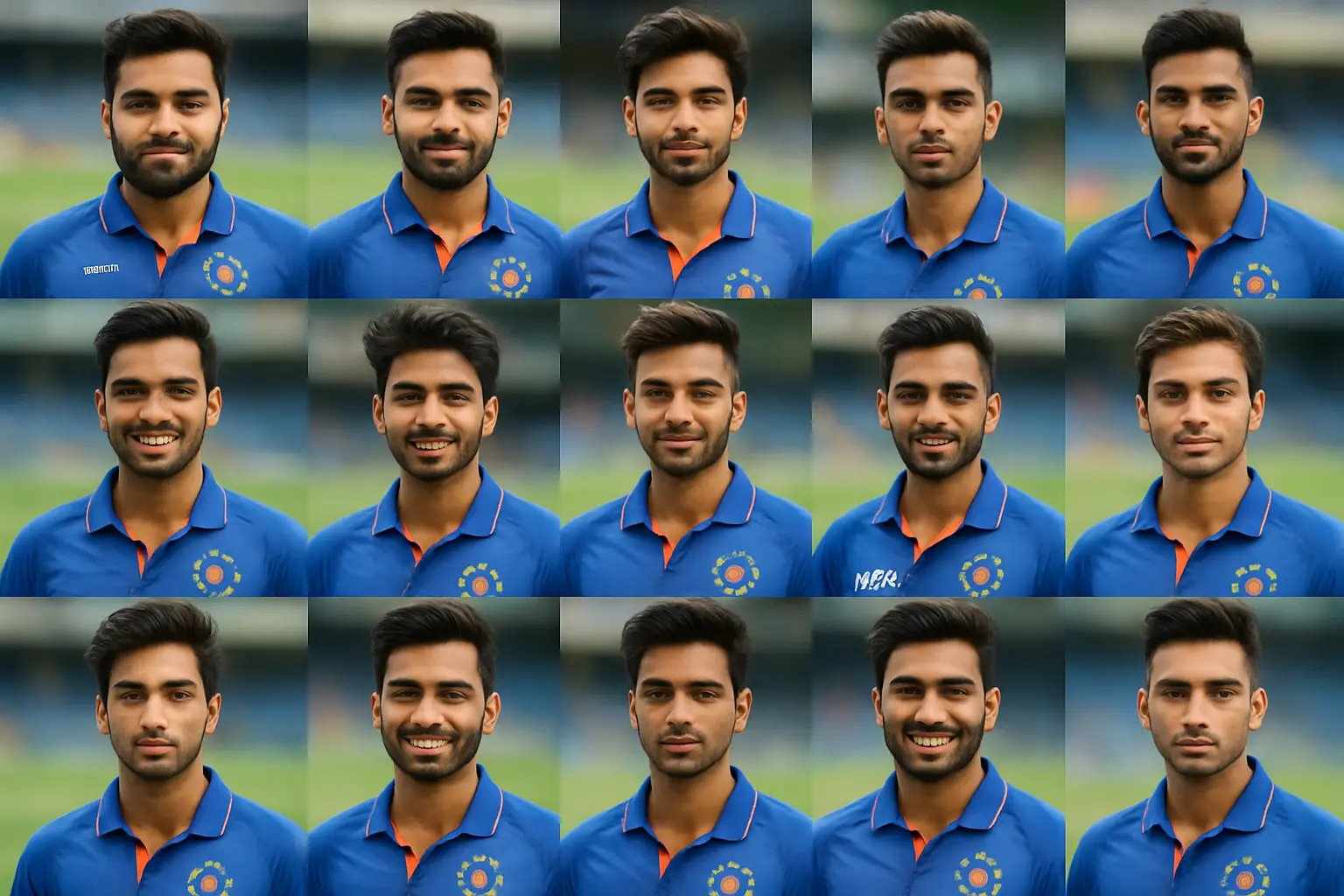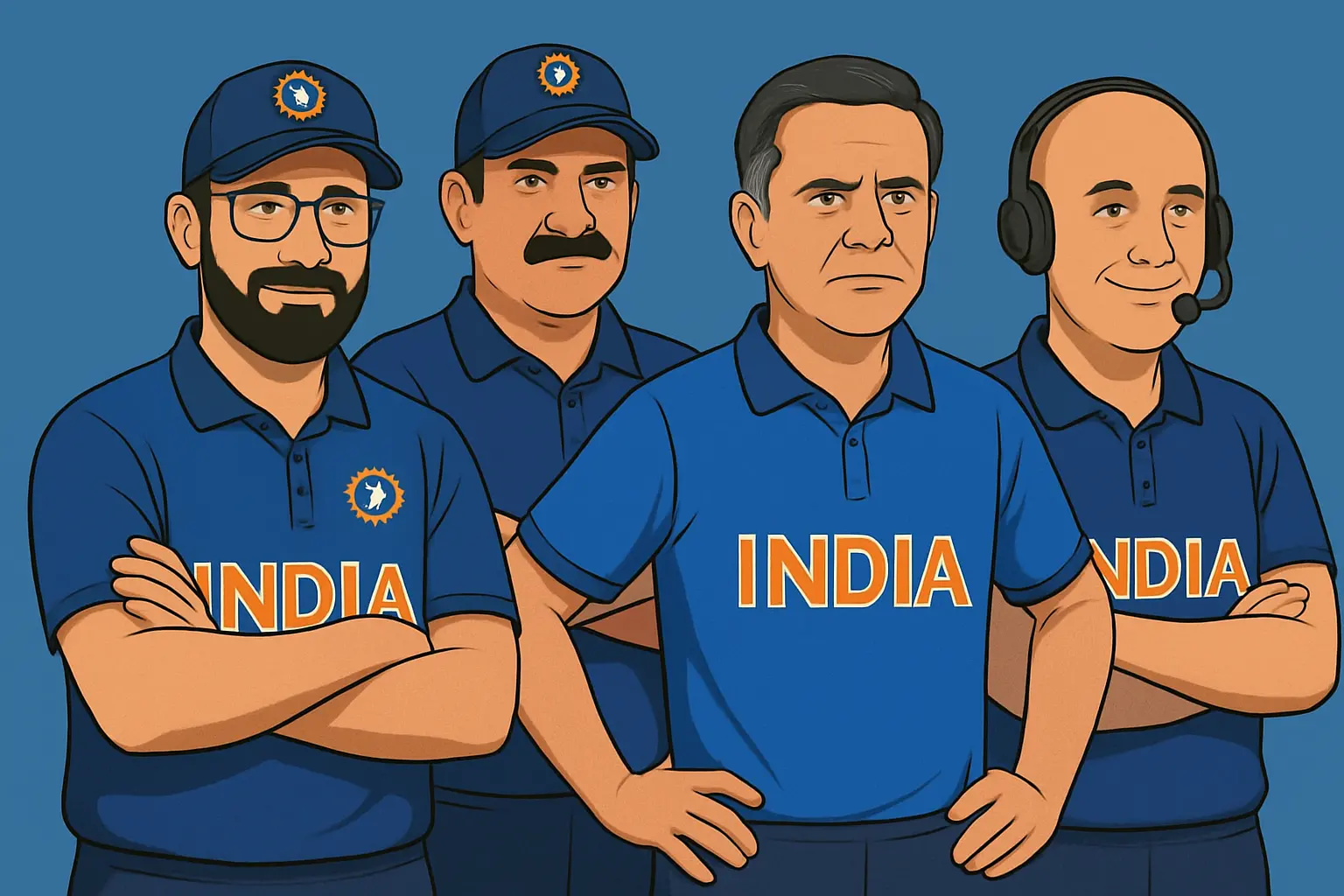A T20 hundred is chaos distilled. It starts with a single swing that sails into the crowd, and then the whole night starts to tilt. Bowlers retreat to the top of their marks, eyes suddenly darting to boundaries they cannot protect. Captains move pawns, only to watch the board flip over. The fastest century in T20 cricket lives in that chaos. It isn’t a quiet accumulation. It is shock and awe, geometry hurried, timing heightened, courage laid bare. And it is the purest distillation of what the format promises.
Early answer, straight and simple:
- Fastest century in T20 overall: Chris Gayle, 30 balls, IPL match at the M. Chinnaswamy Stadium.
- Fastest century in T20 International: Jan Nicol Loftie-Eaton, 33 balls, Namibia.
- Fastest century in women’s T20I: Deandra Dottin, 38 balls, West Indies.
What “fastest” means here
- “Fastest” in this context is measured by balls faced to reach 100.
- T20 is the umbrella format for all recognized Twenty20 cricket, which includes T20 Internationals (T20I) and domestic/franchise leagues such as the IPL, BBL, PSL, CPL, and others.
- T20I refers specifically to international matches between two ICC-designated international sides.
- League records are not the same as T20I records, and both sit within the wider pool of T20 records.
The definitive overall marker: Gayle’s 30
Chris Gayle’s century off 30 balls in the IPL remains the north star. It wasn’t simply speed. It was violence disguised as rhythm. He opened up the leg side with that locked front leg and carved through the off side when the fielders were pulled square. He lofted spin with contempt, dragged pace behind square, and found a way to turn every ball into a scoring event. A classic Gayle hundred in Bangalore almost always carries an asterisk in the head of anyone who has played there: small square boundaries, thin air for the psyche of the bowler, and a surface that takes the sting out of length. But the 30-ball milestone still feels alien. Batting collapses sometimes last longer.
The fastest century in T20 International
A record shaped by freedom. Once the preserve of two or three mega-hitters, the fastest century in T20I now belongs to Jan Nicol Loftie-Eaton at 33 balls. It is one of those feats that tells you two stories at once. First, the explosion in depth: national sides from the associate world have developed their own engines of power-hitting. Second, the scoring curve at international level has shifted so decisively that the once-unthinkable is now simply a benchmark waiting to be challenged.
The shortest route to three figures at international level used to live at 35 balls. It is now faster. That is not a small step; it is a re-calibration of the ceiling.
The fastest century in IPL history
The IPL record is the overall record: 30 balls. This matters because league conditions often tilt toward batting, but the IPL also offers arguably the deepest pool of varied bowling plans. It is the league where you face the highest number of quicks who can swing it hard in the powerplay, wrist-spinners who turn it both ways, and high-pace death specialists. For a batter to blast a 30-ball hundred in that context is less a fluke and more a perfect storm.
Behind the record, a tactical anatomy of the fastest T20 hundreds
- The best powerplay exploitation: A true fastest century in T20 typically passes fifty by the end of the powerplay or just after it. A high baseline in overs 1–6 forces the opposition into defensive fields in the middle overs.
- Middle-overs acceleration without dot balls: The unsung trick. Strike-rotation against spin keeps the engine warm so that every loose ball is punished. Dots destroy the mathematics of a 30–40 ball hundred.
- Death overs as a runway: Many record runs arrive between overs 14–18, when pace-on bowling returns and fielders are deeper than they can cover. The best finishers anticipate lengths, target one side of the ground, and cash in.
- Boundary distribution: For the elite fastest T20 centuries, sixes usually outnumber fours. A raw count of 10–15 sixes in the run to three figures is a recurring pattern.
- Batting position: Openers and No. 3s dominate these lists. They access the new ball, exploit the field, and get more deliveries. Middle-order hundreds happen, but they require an early entry or a freakish death-overs binge.
- Match situation: Chasing large totals creates incentive structures that encourage maximal risk. Many record-speed hundreds arrive in chases because the scoreboard removes hesitation.
Record snapshots for quick reference
| Category | Holder | Balls to 100 | Format/Competition | Note |
|---|---|---|---|---|
| Overall T20 | Chris Gayle | 30 | IPL | Landmark 175* innings |
| T20I (men) | Jan Nicol Loftie-Eaton | 33 | T20I | Associate-giant leap in speed |
| Women’s T20I | Deandra Dottin | 38 | T20I | A blueprint in clean hitting |
| IPL | Chris Gayle | 30 | IPL | Double as overall record |
| BBL | Craig Simmons | 39 | Big Bash League | Perth Scorchers power surge |
| PSL | Usman Khan | 36 | Pakistan Super League | Multan’s turbo-boosted start |
| CPL | Andre Russell | 40 | Caribbean Premier League | Power-hitting masterclass |
Note: Leagues update rapidly. These markers stand as widely recognized benchmarks and are monitored constantly.
T20I fastest century context, with layers that matter
The T20I record change to 33 tells a larger story about modern hitting. Players now rehearse matchups the way classical batters rehearsed cover drives. They isolate bowlers, map the field, and pick pipelines: the short square boundary, the wind, the stand with the softest landing, the side with the longer pocket for twos. The fastest T20I century also gained from the reality that international cricket now welcomes more full-status sides and more fixtures between major and emergent teams. That isn’t to diminish the achievement. It reflects the current ecology: more variety in attack types, more opportunities to plan aggressive phases, and more chances for hitters with courage to set the tone rather than wait for it.
The IPL’s imprint on the fastest T20 century debate
Everything learned about ultra-fast hundreds in T20 funnels through the IPL. Bowlers arrive with laptop-thick data files. Analysts plot pre-over plans and mid-over pivots. Captains have prearranged fielding shells for particular batters, especially those known for driving square or swinging across. In that environment, a 30-ball hundred means a batter read the patterns better than the fielding team adapted. One swing ahead. One over ahead. And then the scoreboard runs out of ways to keep up.
BBL, PSL, CPL and the way conditions tilt speed
- Big Bash League: Australian pitches often offer consistent pace and carry, but with larger squares and straighter boundaries at some venues. The fastest century here lives at 39 balls, a product of front-foot driving with pace on the ball, and a top order that commits early to lofted hits in the V.
- Pakistan Super League: For several seasons, PSL attacks have been stacked with high-pace options and quality leg-spin. A 36-ball fastest century in PSL shows that even in a bowler-rich competition, a batter can control the arc of the innings if the powerplay falls right and a couple of overs miss the blockhole late.
- Caribbean Premier League: Spin in the middle overs and heavy air often demand strength and timing more than pure bat speed. A 40-ball benchmark fits the CPL’s equilibrium: punishing pace-on periods, then picking the right matchups against spin.
Women’s T20I fastest century and the widening gap to chase
Deandra Dottin’s blazing 38-ball hundred for West Indies in women’s T20I cricket sits as a testament to what pure ball-striking can do even with field restrictions that differ subtly across competitions and surfaces that can be two-paced. The innings set a template for how top-order women’s T20 batting has evolved: trigger early, trust the arc, play through the line, and sweep and slog-sweep as assertively as any modern men’s counterpart. Since then, the format has watched a stream of high-octane innings in both international and league play, and the ceiling is primed for another jump.
Country-wise fast-scoring snapshots in T20I
- India: Rohit Sharma’s 35-ball T20I hundred marked the moment India’s white-ball batting fully embraced tempo. The knock lived in the same broad constellation of skill as his ODI double hundreds: rhythm first, destruction later.
- South Africa: David Miller’s 35-ball landmark, powered by clean swings down the ground and brutal slogging to cow corner, pushed the global pace and reset expectations around finishing roles.
- West Indies: Johnson Charles’ 39-ball T20I hundred is pure Caribbean hitting DNA: weight transfer, still head, ruthless arcs through midwicket and long-on, and an attitude that says every length can be punished.
- New Zealand: Colin Munro’s sprint to three figures sits in the high-forties space. Strong hands through the line and an instinct to pick up pace-on bowling make him the prototype for left-handed white-ball aggression.
- England: Liam Livingstone’s powerbase is lower-body stability with astonishing bat speed, and that delivered England’s fastest T20I hundred in the low-forties ball range.
- Australia: Glenn Maxwell’s best T20I hundreds are audacious geometry lessons: reverse sweeps at pace, switch hits that defy field settings, and a fastest mark in the high-forties that feels faster than the number because of how he bends the field.
- Afghanistan: Hazratullah Zazai’s surge to a T20I hundred in the low-forties is a study in hand speed and straight hitting. Afghan batting has embraced powerplay belligerence in a way that compresses chase timelines.
- Pakistan: Babar Azam’s T20I hundred set the national fastest mark in the high-forties ball range. It carried the elegance of a fluent cover-driver translated into the ruthless math of T20 intent.
- Sri Lanka: Mahela Jayawardene owns the defining early T20I hundred for the country, a masterclass in shot placement and tempo that landed in the low-fifties for balls faced.
- Bangladesh: Tamim Iqbal’s T20I hundred remains the domestic flagbearer, a study in role clarity, strike-rotation, and picked-off power hitting at the end.
These snapshots focus on leaders and the typical ballpark ranges associated with each country’s fastest T20I hundred. Exact listings change as fresh innings land, and they tend to change more quickly today than at any point since the format began.
How innings phases stack up in a true fastest T20 hundred
- Powerplay, overs 1–6: Best cases produce 50-plus without excessive risk. Two overdriven lofts in the V, one slog-sweep into the stands, and a couple of crisp cuts or pulls off width or shortness. Dot balls are enemies; singles and twos keep the threat live.
- Middle overs, overs 7–14: The best speed-hundreds lose almost no momentum. Spin is milked or punished based on length. Good batters sit deep in the crease for the short one and step out to meet the fuller ball. Strike rate holds above 200 with minimal dot count.
- Death overs, overs 15–20: A shortest path to the milestone arrives here. Length misses are deposited into set zones. Yorkers are converted into scoops or opens. A batter hitting a hundred in 30–40 balls will typically score at least a third of their runs after over 14.
Boundary maps and strike-rate texture
- Boundary counts tilt toward sixes in elite rapid hundreds: often 10–15 sixes on the way to the milestone.
- To reach a hundred in 30–33 balls, a batter must sustain a strike rate around 300 across the duration to the milestone. That is the equivalent of five or six good scoring events every over with very few misses.
- Ramps, scoops, and switch-hits increasingly play a role when teams commit to yorker-heavy death plans. The modern fastest century in T20 often includes at least one ramp off pace and one reversed or switch-hit stroke off spin.
Venue, altitude, and ground dimensions
- Bangalore’s compact square boundaries and good pace in the surface have turned many innings into rocket shows. The shortest path to a T20 hundred often passes through this venue.
- Sharjah’s small boundaries and true surfaces create a geometry lesson for hitters who love the arc from long-on to deep midwicket.
- High-altitude venues in South Africa or the Himalayan foothills amplify carry; mishits can leak into the stands and dramatically alter risk calculus.
- Mumbai and Kolkata offer different tests. Wankhede gives skiddy pace and short straights; Eden Gardens provides truer bounce and a faster outfield that rewards square hitting.
- Lahore and Karachi place extra value on timing. New ball swing can bite, but as dew arrives, the chase line accelerates and the night becomes a batter’s ally.
How chasing and defending change the clock
- Chasing big: The fastest centuries cluster in large chases, especially when required rates climb north of double digits by the end of the powerplay. There is clarity to the task that removes half-committed strokes.
- Batting first: If a side loses a wicket early but the pitch looks a featherbed, an aggressive top order can ride intent through the innings and create platform-plus fireworks. The best first-innings fastest hundreds usually coincide with small grounds and one or two bowlers having an off night.
Tactical micro-battles within the fastest T20 hundreds
- Matchups vs. wrist-spin: Elite hitters pick the wrong’un early and commit to a one-side fence. They either go inside-out over extra cover or turn the googly into a slog-sweep, killing the spinner’s best deception.
- Matchups vs. left-arm pace: The natural angle into the right-hander’s pads can be a gift if the batter’s swing plane sets for the pick-up over midwicket. The counter is wide yorkers; the counter to the counter is reach and slice.
- Matchups vs. off-spin and finger spin: Depth of crease and early footwork. A fast hundred rarely expends deliveries on stock balls from finger spinners unless the pitch grips. Most hitters look to manufacture pace and find gaps square.
- Powerplay seam: Full and wide with a heavy dose of fielders behind point can slow down a left-hander; back-of-a-length on a wide line can starve a right-hander who wants to free arms. The true fastest hundreds neutralize this by walking across or stepping down early and daring the bowler to miss.
League-by-league style notes for the fastest hundred hunters
- IPL: Deep bowling, extreme data prep, and high-pressure chases. The environment rewards the smartest hitting more than the wildest. Being one ball ahead of the plan is everything.
- BBL: True pace and carry, often bigger grounds. The best fast hundreds here combine lofted straight hitting with square-of-the-wicket muscle when length drifts.
- PSL: Feel of international bowling quality, particularly with pace. The hitters who cash in pick one end, one bowler, one over, and treat it as the fulcrum.
- CPL: Spin-heavy middle overs plus humid air that makes the old ball heavy. Timing and leg-side power separate the almost from the unstoppable.
- T20 Blast: Varied surfaces, English weather, and square dimensions that shift venue to venue. The best speed-tons show adaptability across lengths and a heavy cut-and-pull menu.
- SA20 and ILT20: Ball-striking showcases on batting-friendly tracks, often with short sides and altitude or desert air that rewards carry.
- LPL and BPL: Two-paced decks appear more often; the fastest hundreds come when batters stay deep and convert length with strong wrists.
Related markers fans track alongside the fastest T20 century
- Fastest 50 in T20 and fastest 50 in T20I: Early momentum metrics that often predict whether a 30–40 ball hundred is on the cards.
- Fastest 75 in T20: A mid-innings marker for analysts; players who cross 75 that quickly usually beat the hundred by a margin.
- Fastest 150 in T20: Rarer, but a natural byproduct when a batter hits the hundred before the death starts.
- Highest individual score in T20: Big scores often have middling time-to-hundred numbers because the final fifty can stretch; the fastest centuries sit on a different axis from the absolute highest totals.
- Most sixes in a T20 innings: A close cousin metric. Record sledgehammers here frequently overlap with the fastest hundreds.
- Most T20 centuries by a player: Consistency of big scores rather than pure speed. Players like Chris Gayle, Michael Klinger, Babar Azam, and others occupy the top band in career centuries, each with a distinct power blueprint.
Myth-busters and clarifiers that clean up the record talk
- T20 vs T20I vs league records: A record in the IPL does not automatically translate to a T20I record. They belong to different buckets. The all-T20 pool includes everything that meets official status standards from ICC-recognized domestic leagues and international T20Is.
- The idea of a 200 in T20: The math makes it unlikely at top levels, not impossible in a theoretical sense. To get there, you would need an unusually short boundary side, multiple full-toss gifts, and a freakish run of missed attempts from the fielders. The fastest hundred pace doesn’t necessarily guarantee a double.
- Strike rate inflation: A 30–35 ball hundred does not necessarily equate to a 300-plus strike rate across the full innings. Bowlers adapt, and fatigue and field placement adjust the tempo after three figures.
- Conditions don’t guarantee speed: Small grounds and flat decks help, but the fastest hundreds also require a night where every choice lands and every edge finds space.
Phase-of-innings analytics that reveal the blueprint
- The best 30–40 ball hundreds show dot-ball percentages in single digits up to the milestone.
- Boundary-per-ball ratios climb near one boundary every two balls during the peak surge overs.
- Hit zones often cluster around two arcs: long-on to midwicket and extra cover to long-off, with off-pace scoops providing supplementary scoring behind the keeper.
- A shift in wrist position and contact point against pace-on at the death enables the flat, skimming six that keeps the strike rate elevated even when yorkers arrive.
A short, practical glossary for how fastest T20 centuries are built
- Balls faced to hundred: The only number that truly defines speed for this record.
- Strike rate: Runs per hundred balls. For fastest hundreds, the strike rate to the milestone often exceeds 250 and can be well above 300 in extreme cases.
- Boundary count: Sum of fours and sixes, with elite speed-tons skewing to sixes.
- Powerplay scoring: The ignition phase that dictates whether a speed-chase is viable.
- Death overs acceleration: The final gear that turns a good knock into a record.
- Match situation: Chasing pressure can improve intent, batting first can improve freedom.
- Batting position: Openers and No. 3s hold the edge; middle-order miracles are rarer and rely on early entry.
Venue snapshots for record chasers
- Bangalore: Most forgiving to straight hitting; mis-hits drag over the rope. Edges fly to the shorter square.
- Sharjah: Mistakes turn into fours, good shots turn into souvenirs. Spinners fear length; pacers fear anything that isn’t a yorker.
- Kolkata: A surface that rewards clean bat speed; shots in front of square travel. The outfield turns ones into twos.
- Mumbai: Pace skids on; arc hitting down the ground is rewarded. Yorkers bounce on faster than bowlers realize.
- Lahore and Karachi: Classy batters feast under lights when dew arrives and the white ball refuses to grip.
- Adelaide and Perth: True pace and bounce make straight punching and back-foot pulls equally potent; mishits can still die on longer square pockets.
League-specific breakouts worth tracking for fastest century hunters
- IPL: The fastest century in IPL belongs to Gayle at 30 balls. Secondary benchmarks live in the mid-to-high thirties and low forties for several big names. The league’s best venues for speed remain Bangalore, Mumbai, and occasionally Hyderabad and Delhi when the surfaces are true.
- BBL: With Craig Simmons at 39 balls as the benchmark, the league showcases classical V hitting. Melbourne and Adelaide nights can launch a run-ball avalanche when line and length stray.
- PSL: Usman Khan’s 36-ball standard underscores how the PSL’s batting dimension has caught up to its famed bowling depth. Lahore and Rawalpindi nights, when the ball skids, can alter the pace universe.
- CPL: Andre Russell’s 40-ball note is a warning shot. Very few players can carry that level of consistent power in humid conditions; when timing aligns, the scoring looks inevitable.
- SA20, ILT20, MLC, LPL, T20 Blast: These leagues are primed for record shifts because of how schedules evolve and how imports mix with local talent. Base assumptions about pace-friendly surfaces and small pockets of short boundary sides hold, but the newness of some competitions increases volatility, which is exactly what a record-chaser needs.
Women’s cricket, league growth, and the next leap
League ecosystems in women’s cricket are turbocharging batting development. Players now train with ball-tracking, practice against machine-programmed variations, and simulate death overs at intensity levels that used to be rare. The fastest women’s T20I century belongs to Deandra Dottin at 38 balls, but the pipeline is overflowing. Batters such as Alyssa Healy, Sophie Devine, Smriti Mandhana, Shafali Verma, Hayley Matthews, and Nat Sciver-Brunt have stitched together innings with the power-to-timing ratios that foreshadow a push toward the mid-thirties. League windows, condensed travel, nighttime dew, and surfaces truer than ever set the stage.
Age, experience, and the psychology of not blinking
- Young hitters break this record when freedom outruns fear. They don’t have the scar tissue that urges caution after a mistimed slog.
- Veterans break it when experience compresses the decision tree. They see the ball earlier, read the field faster, and trust the preparation more completely.
- The best innings maintain one constant: minimal hesitation. Every ball offers a decision, and in the fastest hundreds the batter makes that decision before the bowler is halfway in.
Bowling countermeasures that can slow the tempo
- Early off-pace and change of angles into the hip: Deny the batter a free swing through the line in overs 1–3.
- Hard-length into the hip with a square leg sweeper and deep midwicket: Force picks to the larger side and attack miscues.
- Pre-meditated wide yorkers in sets of two or three, then one surprise bouncer: Make the batter reach and reduce access to long-on and midwicket.
- Early introduction of wrist-spin with a long-off and a longer deep midwicket: Offer the single and choke the release ball.
- Keep square boundary riders on the shorter side and bring mid-off up for psychological pressure: The batter might resist the lofted straight hit once and lose tempo.
The analytics lens: what separates a fast fifty from a fast hundred
- Conversion matters more than pace in the first thirty balls. Many batters can touch fifty off 20–22 balls; very few sustain pace past 30 deliveries without a mid-innings stall.
- Exit velocity of boundaries and arc control correlate strongly. Balls that travel flat over cover or midwicket indicate swing plane stability, which endures even when bowling varies.
- Two-scoring rates become critical. Fast hundreds need not be only sixes; twos off deep fielders maintain pressure and transform dots into win conditions.
Seeds of tomorrow’s records
- Schedules now cluster marquee T20s in windows with long rest and elite preparation. Fresh legs help.
- White-ball data is public enough that batters arrive with matchups memorized. The right-hander who knows the left-arm seamer’s slower-ball grip will set early.
- Training technology compresses the gap between practice and reality. Batters can simulate 90 mph short balls one minute and 72 mph back-of-the-hand slower balls the next.
A compact table of headline records with context
| Record | Holder | Balls to 100 | Competition | Context cue |
|---|---|---|---|---|
| Fastest century in T20 (overall) | Chris Gayle | 30 | IPL | Chinnaswamy geometry, top-gear Gayle |
| Fastest century in T20I (men) | Jan Nicol Loftie-Eaton | 33 | T20I | Associate batting revolution |
| Fastest century in women’s T20I | Deandra Dottin | 38 | T20I | Clean striking across phases |
| Fastest century in IPL | Chris Gayle | 30 | IPL | Same as overall |
| Fastest century in BBL | Craig Simmons | 39 | BBL | Pace-on, straight hitting |
| Fastest century in PSL | Usman Khan | 36 | PSL | Powerplay to death glide |
| Fastest century in CPL | Andre Russell | 40 | CPL | Spin and pace punished alike |
Practical comparisons that help the eye
- A 30-ball hundred requires averaging more than three runs a ball to the milestone. That is multiple sixes per over with nearly no dots.
- A 33-ball hundred keeps the average above three per ball for more than five overs while facing international-quality bowling and fielding. That places the record in the realm of elite execution even when conditions are ideal.
- A 38-ball women’s T20I hundred sits comfortably on the same algorithm. The physicality and timing in that mark are every bit as rare within that universe of play as the 30-ball men’s T20 benchmark.
Fastest in T20 by league or country, and how to extend the topic
- Fastest century in IPL history: the headline belongs to Gayle at 30 balls. League watchers also track the next rung down in the thirties and low forties, a club that includes Yusuf Pathan and David Miller among others.
- Fastest century in BBL, PSL, CPL: the present standards of 39, 36, and 40 balls define very different bowling ecologies but identical batter courage.
- Country-specific bests in T20I: India, South Africa, West Indies, England, New Zealand, Australia, Afghanistan, Pakistan, Sri Lanka, and Bangladesh all have different tempo signatures, reflective of domestic coaching philosophies and league ecosystems.
Situational variants that matter to coaches and analysts
- Fastest T20 century while chasing a 200-plus target: a metric teams track because it blends speed with pressure management.
- Fastest T20 century by an opener vs a middle-order batter: role context changes risk tolerance. Openers can absorb one or two sighters; middle-order hitters sometimes need to go from ball one.
- Fastest T20 century with most sixes: an expression of raw power. Some of the quickest hundreds actually carry more fours because of field placement and intelligent gap-hitting.
- Fastest T20 century at high-altitude venues: conditions influence ball carry and psychology; analysts factor this when weighting performances.
How to read a fastest-century innings without the scoreboard
- Look at how early the batter picks length. A hitter who is up on the toes before the bowler’s final stride is in sync.
- Watch the head position through contact. The best tonight rarely fall away; the head stays still while the hands do the violence.
- Count the defensive shots. In the fastest hundreds, there are almost none before the milestone. Even risk-management swings are attacking in intent.
Editorial note on data and methodology
- “Fastest” uses balls faced to reach 100 as the sole yardstick.
- Competitions included: all ICC-recognized T20 matches, including T20I and official domestic T20 leagues such as the IPL, BBL, PSL, CPL, Blast, SA20, ILT20, MLC, BPL, and LPL.
- Primary data sources: ICC match archives and leading cricket statistical databases used by broadcast teams and analysts.
- Validation approach: cross-verification against ball-by-ball logs and official scorecards.
- Records in fast-moving leagues are revisited frequently and updated as soon as official scorecards confirm milestones.
Why the fastest century in T20 keeps its spell
The format was invented for urgency. Somewhere between the floodlights and the thump of a bat echoing into the stands, urgency becomes art. The fastest T20 hundreds are not just speed. They are balance under speed. They are a batter staying still when everything else accelerates. They are premeditation without panic, risk without recklessness, joy without apology. Every time the record gets trimmed by a ball or two, the sport recalibrates the possible. And everyone, from net bowlers to data scientists, starts again, planning for the next night when the clock will bend.
Key takeaways for fans, coaches and the record-obsessed
- Overall fastest century in T20: 30 balls, an IPL masterwork that still feels science fiction.
- Fastest century in T20I: 33 balls, a modern signal that power-hitting has gone global.
- Fastest century in women’s T20I: 38 balls, a standard set with audacity and timing in equal measure.
- League benchmarks: PSL at 36, BBL at 39, CPL at 40. Each league’s style flavors the way these records get made.
- Country snapshots in T20I: different philosophies, same destination. The fastest marks track the curve of national batting evolution.
- The blueprint: low dots, six-heavy boundary counts, powerplay ignition, and a death overs runway.
- The battlefield: short sides, dew-laden chases, altitude-assisted carry, and bowlers searching for the perfect wide yorker.
The record does not live on a page. It lives in the night the game sped up, the night timing felt inevitable, the night a batter’s will and a stadium’s roar became the same sound. When the next one arrives, the path will look familiar. The feeling will not.

